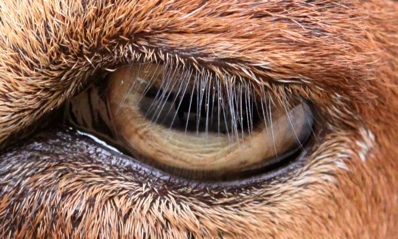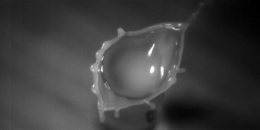GUILLERMO’S RESEARCH

I am a PhD student working with David Hu at the Woodruff School of Mechanical Engineering at the Georgia Institute of Technology. Currently, I am investigating how hairs help organisms keep clean.
We recently identified an optimal eyelash length for minimizing evaporation and contamination of the tear film in wet, mammalian eyes. This length, roughly one-third of the eye opening width, is consistent with anatomical measurements of 22 genetically diverse mammalian species spanning four orders of magnitude in size, from a hedgehog to a giraffe. Eyelashes were found to divert incoming airflows. These airflows may dry the eye or deposit unwanted particles. By diverting airflows, eyelashes act as passive filters that, rather than intercepting particles, prevent particle deposition. Visit the Eyelashes page for more information and pictures and videos.
Previously, I investigated how specific plant species harness the kinetic energy of falling rain to spread their seeds. Through the use of their uniquely-shaped fruit bodies, these short plants can launch their seeds to distances upwards of one meter.
By studying the hydrodynamics of droplet splashes onto these geometries, we can gain a better understanding of splashing and droplet behavior. Many applications in industry deal with droplets splashing onto irregular surfaces, including ink-jet printing, spray cooling, and energy harvesting from rain. Visit the Splash-Cup page for more information and pictures and videos.
I am also working on finding out how puffball mushrooms disperse their spores. These fungi are unique in that their spores are completely enclosed by their spherical fruiting body. In order to release their spores, they produce small aperture(s) when they are matured through which plumes of spores can be launched when triggered by an outside stimulus. The stimulus has been confirmed to be impacting rain drops. When a rain drop strikes the mushroom it deflects its membrane and creates an overpressure that drives a flow of air and spores through the opening(s).
By understanding how organisms control the transfer of microparticles, we may gain insight into biological solutions that could inspire new self-cleaning technologies and designs to benefit society. Our lab’s website can be found here: http://www.hu.gatech.edu/
Welcome

My research focuses on the fluid mechanisms responsible for the transfer of microparticles in biological systems.




